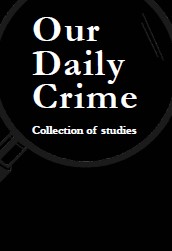Intrusion in Yugoslavian monetary system in 1946 by counterfeiting dinar banknotes of DF Yugoslavia (1944) or an example of how an economic crime has been declared a political crime
Intrusion in Yugoslavian monetary system in 1946 by counterfeiting dinar banknotes of DF Yugoslavia (1944) or an example of how an economic crime has been declared a political crime
Author(s): Vladimir Geiger
Subject(s): Criminal Law, Economic history, Criminology, WW II and following years (1940 - 1949), Law on Economics
Published by: Hrvatski institut za povijest
Keywords: money counterfeiting; DF Yugoslavia; economic crime; political crime;
Summary/Abstract: Intrusions in monetary systems by money counterfeiting are mostly conducted by individuals or groups motivated by acquiring illegal benefits. Despite strict legal sanctions stipulated for counterfeiting and uttering of counterfeit money in all legislations, occurrence of forgeries is frequent. Many various, more or less successful forgeries of Yugoslavian banknotes in the period of “people’s democracy” are known. The best-known case is one related to “enemies of New Yugoslavia” who have counterfeited a significant amount of dinar banknotes of Democratic Federal Yugoslavia (1944 editions) in 1946 in Trieste, Italy, thereby, according to the Yugoslavian authorities, attempting to endanger the Yugoslavian monetary system. Counterfeits of the 1000 dinar banknote of DF Yugoslavia (1944) were successful, and a decision to withdraw those banknotes was made at the beginning of 1947. On counterfeits of dinar banknotes of DF Yugoslavia (1944) from 1945/1946, much information is known to us from criminal and numismatic literature, published archival documents, and released copies of counterfeit banknotes from police and numismatic collections. However, many details about stated forgeries and the judicial procedure against the counterfeiters, i.e. those who uttered the counterfeits, most of whom were arrested in Yugoslavia, mostly on Croatian territory, is insufficiently known and researched. The paper also explains how the Croatian/Yugoslavian justice system has sanctioned economic crime and presented it to the public as a political crime through press in 1946.
Book: Our Daily Crime. Collection of Studies
- Page Range: 279-293
- Page Count: 15
- Publication Year: 2014
- Language: English
- Content File-PDF

